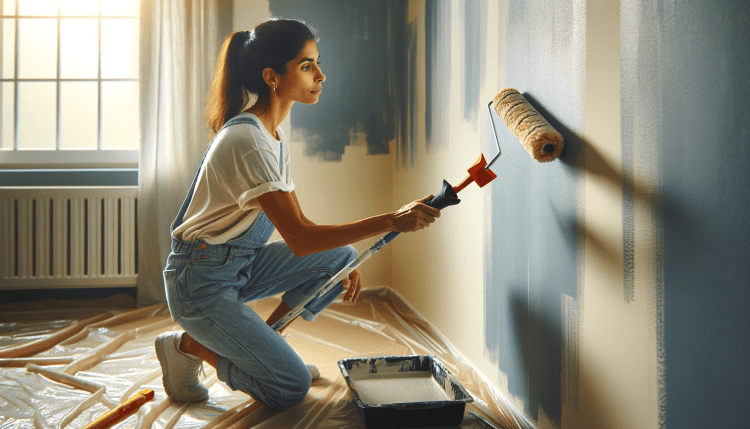
Painting is one of the most accessible and impactful ways to refresh your home. Whether you’re looking to add a splash of color to a room or revamp your entire house, mastering various painting techniques can significantly enhance the outcome. This comprehensive guide will cover essential techniques, tips, and tricks to help you achieve professional-looking results.
Planning and Preparation
Choosing Your Paint
Types of Paint: Understand the difference between water-based (latex) and oil-based (alkyd) paints. Latex paints are easy to clean and dry quickly, while oil-based paints are durable but require more time to dry and have a stronger odor.
Check out our extensive look at the different types of paint available and their pros and cons: Exploring the World of Paints: A Comprehensive Guide
Finish Types: Choose from finishes like matte, eggshell, satin, semi-gloss, and high-gloss, depending on the room’s function and desired aesthetic.
Read our Guide: How To Choose the Right Paint Finish
Tools and Materials
- Paintbrushes (various sizes)
- Roller and roller covers
- Paint tray
- Drop cloths
- Painter’s tape
- Sandpaper
- Primer (if necessary)
Prepping the Room
- Cleaning Walls: Wash walls to remove dirt, grease, and dust.
- Repairing Surface: Fill holes or cracks with spackle and sand smooth.
- Taping Edges: Use painter’s tape to protect trim, windows, and ceilings.
Painting Techniques

Standard Brush Technique
- Loading the Brush: Dip the brush about a third of the way into the paint, tapping off excess.
- Applying Paint: Use long, even strokes. Start from the edges and work towards the center.
Roller Techniques
- Roller Loading: Roll back and forth in the tray to evenly coat the roller.
- Rolling Method: Use a “W” or “M” pattern for even coverage, then fill in the gaps with straight, controlled strokes.
Cutting In
- Precision Edges: “Cut in” at corners, edges, and around trim before rolling. Use a smaller brush for better control.
Advanced Painting Techniques
Sponging
- Effect: Creates a textured, multi-hued look.
- Method: Use a natural sea sponge, dip lightly in paint, and dab on the wall.
Rag Rolling
- Effect: Adds depth and texture.
- Method: Twist or roll a rag and dab it into paint, then apply it to the wall in a rolling motion.
More Advanced Techniques

Stenciling
- Designs and Patterns: Use pre-cut stencils to add designs. Secure the stencil with painter’s tape and use a small brush or sponge to apply the paint.
Color Washing
- Soft, Textured Look: Apply a glaze over a base coat. Work in small sections, using a large brush to apply the glaze in a free-form, overlapping pattern.
Dry Brushing
- Layered, Dimensional Effect: With minimal paint on a dry brush, lightly drag the brush over the surface, allowing the base color to show through.
Clean Up and Maintenance
Cleaning Brushes and Rollers
- Latex Paints: Clean with soap and water.
- Oil-Based Paints: Use mineral spirits for cleaning.
Storing Leftover Paint
- Airtight: Seal the can tightly to prevent drying out.
- Labeling: Label the can with the room and date for future touch-ups.
Wall Maintenance
- Cleaning: Use a mild detergent and water for cleaning painted walls. Avoid harsh chemicals.
Do’s and Don’ts
Do’s
- Do Test Colors: Apply swatches in different areas and observe them at various times of the day.
- Do Use Primer: Especially important for drastic color changes or on new drywall.
- Do Protect Your Space: Use drop cloths to protect floors and furniture.
Don’ts
- Don’t Rush: Allow adequate drying time between coats.
- Don’t Overload Brushes/Rollers: This can lead to drips and uneven application.
- Don’t Neglect Ventilation: Keep the area well-ventilated, especially when using oil-based paints.
Final Thoughts
Painting your home can be both a fun and rewarding experience. By mastering these painting techniques, you’ll be well-equipped to give any room in your house a fresh, new look. Remember, the key to a great paint job is not just the color you choose, but also the care and attention to detail you apply in your painting technique.





